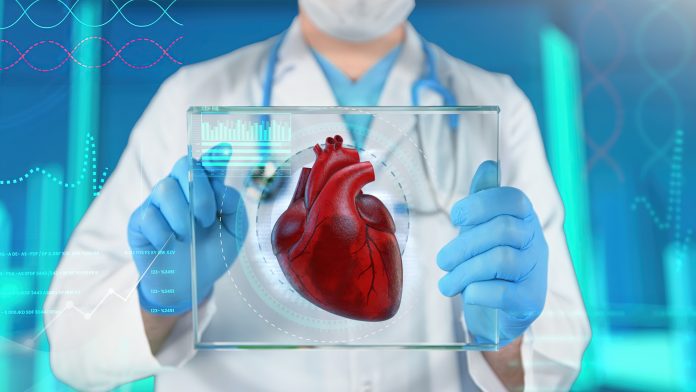
The poor myogenic tone in micro-arteries may be a significant cause of unexplained heart disease, a new study has found.
The research, led by Professor Raimondo Ascione at the University of Bristol and Professor Kim Dora at the University of Oxford, has identified that abnormalities in minuscule blood vessels in the heart may significantly impact their myogenic tone. This novel finding may potentially explain the processes behind unexplained heart disease.
Atherosclerotic blockages of large arteries are well-understood causes of heart disease, requiring bypass surgery or stents to remedy them. However, until now, tiny blood vessels that spread to regions of the heart that are far beyond large arteries have never been studied comprehensively, with the new investigation revealing that they may play a significant role in causing unexplained heart disease.
This newfound understanding will potentially lead to developing new treatments for people with angina-like symptoms who lack blockages in their larger arteries and patients suffering unexplained heart attacks or heart failure.
The research is published in Cardiovascular Research.
Diagnosing poor myogenic tone
Myogenic tone is the normal intrinsic constriction of the micro-arteries when responding to changes in blood pressure, with myogenic tone controlling the distribution of blood flow within the heart muscles and other parts of the body.
Traditional scans of the heart can proficiently locate blockages in large coronary arteries; however, they cannot visualise the hair-sized micro-arteries. This makes it impossible to detect myogenic tone, which scientists believe develops independently of disease in the larger arteries.
Analysing micro-arteries
To conduct their research, the team obtained small heart samples – that would have otherwise been discarded – from 88 patients at the Bristol Heart Institute, all of whom had no significant coronary artery blockages and were undergoing valvular cardiac surgery. A further three samples were procured from human organ donors and 45 from pigs, attained from the Newcastle Institute of Transplantation Tissue Biobank and the University of Bristol Translational Biomedical Research Centre, respectively.
The team discovered that despite retaining their cell viability, 44% of the micro-arteries from patients displayed abnormal myogenic tone, which was associated with an excessive presence of a molecule named caldesmon that lives within the muscle’s cells in the wall of the abnormal micro-arteries, causing poor alignment of these contracting cells. These abnormalities result in the micro-arteries impacting the hearts’ blood supply and other organs of the body, often leading to severe outcomes. The findings illuminate the processes behind coronary microvascular dysfunction that may occur before clinically known heart disease.
Professor Raimondo Ascione, NHS Consultant Cardiac Surgeon and Head of the TBRC at the University of Bristol, said: “It has been a pleasure to work with Professor Dora on this landmark study over the last seven years. No study had focused on ex vivo poor myogenic tone of the cardiac microcirculation before. These tiny arteries are sited deep within the cardiac wall, well beyond the blocked arteries we treat in the NHS with stents or bypass surgery and cannot be seen with a naked eye.
“Our study lifts the lid on cardiac microvascular dysfunction. It could help to develop new treatments to help patients with angina-like symptoms without coronary blockages, or those recovering from a heart attack or unexplained heart failure.”
Kim Dora, Professor of Microvascular Pharmacology at the University of Oxford, explained: “I am so excited with the results of this study and the excellent teamwork with Professor Ascione in Bristol. Not only will our findings enhance the development of new medical treatments and possibly new patient imaging modalities, but they represent a new ex-vivo research model for thousands of scientists globally working on microvascular dysfunction in the heart and other organs.”
Professor Jeremy Pearson, Associate Medical Director at the British Heart Foundation, added: “This study is the first to develop techniques to understand the links between the structure of micro-arteries and impaired myogenic tone, representing the outcome of years of painstaking work to develop the methods and apply them to micro-arteries from human hearts. The findings provide new information that will help to develop treatments for the many patients whose angina occurs without significant narrowing of their coronary arteries.”







